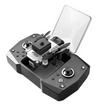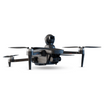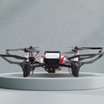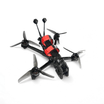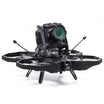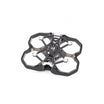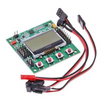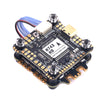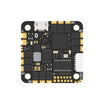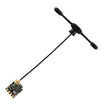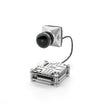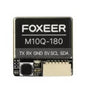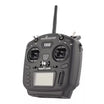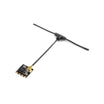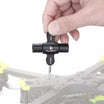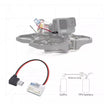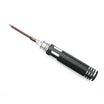In September 2025, India’s drone industry received a landmark boost when the government slashed the Goods and Services Tax (GST) on drones to just 5%, down from the earlier 18–28%. Simulators, training gear, and key defence components were made completely tax-free.
For an industry that has long battled high costs and inconsistent tax slabs, this is not just a reform. It’s a launchpad.
Drones that once carried a price tag heavy with taxes will now be lighter, more accessible, and far more competitive in both domestic and global markets.
Why the GST Cut Matters?
The unified 5% GST rate removes a long-standing pricing distortion that made drones unpredictable and expensive. Earlier:
-
Commercial drones faced 18% tax if camera-equipped
-
5% if they are not camera-equipped
-
Personal drones could go up to 28%
Now, the 5% flat rate smooths the path for producers and buyers alike. Military drones, simulators, high-performance batteries, and communication devices are now fully exempt.
Also read: A guide to drone maintenance 101
India’s Drone Market: Ready for Takeoff
Numbers reveal the true scale of the opportunity:
-
The Indian drone market is estimated at USD 0.47 billion in 2025. This is expected to reach USD 1.39 billion by 2030 at a CAGR of 24.4%. (source: marketsandmarkets)
-
Another forecast suggests the market will grow from USD 654 million in 2024 to USD 1.43 billion by 2029, with drone units rising from around 10,800 to over 61,000. (source: kotaksecurities)
-
In a high-growth scenario, revenue could go up to USD 4.84 billion by 2030, at a 20.4% CAGR. (source: grandviewresearch)
Who Benefits the Most?
The GST cut touches every major sector where drones are becoming indispensable:
-
Agriculture: Cheaper drones mean more farmers can use them for spraying, crop monitoring, and planning. With agriculture accounting for nearly 40% of expected demand by 2030, this can be really beneficial.
-
Defence and Security: With 0% GST on defence drones, simulators, spare parts, and tactical systems, the armed forces can train faster and integrate drones more deeply into operations.
-
Infrastructure and Logistics: Drones for mapping, surveying, and delivery become more cost-effective, speeding up projects and reducing risks.
-
Startups and MSMEs: Reduced taxes free up cash for R&D, enabling smaller companies to innovate instead of just survive.
Policy Tailwinds Strengthening the Industry
The GST reform doesn’t stand alone. It sits on top of a policy framework that has steadily opened the skies for drones:
-
Drone Rules 2021 simplified licensing and cut red tape.
-
The Production-Linked Incentive (PLI) Scheme invested ₹120 crore in local manufacturing, with a new, larger scheme on the way.
-
Imports of fully assembled drones were banned in 2022 to encourage local production.
-
The Digital Sky Platform streamlined permissions, making drone operations easier to manage.
Together, these reforms are turning India into a fertile ground for innovation and manufacturing.
Also read: How drones are supporting search and rescue in conflict zones
InsideFPV’s View: From Opportunity to Leadership
At InsideFPV, we see the GST cut not as a short-term tax benefit, but as a turning point in India’s drone story.
-
We are working on affordable drone designs tailored for agriculture, infrastructure, and surveillance.
-
By doubling down on local manufacturing, we aim to cut dependence on imported components.
-
With simulators now tax-free, we can expand training programs, building a skilled workforce ready to fly drones across industries.
-
On the defence front, InsideFPV is investing in rugged FPV systems that match India’s unique tactical needs.
This is how we plan to move beyond selling drones, and instead build an ecosystem where innovation, accessibility, and impact go hand in hand.
Also read: How insideFPV fits in India’s leading drone defense future
Challenges That Still Need Solving
Of course, there are hurdles:
-
Component dependency: India still imports most of its critical drone parts, particularly from China.
-
Workforce gap: The number of skilled drone pilots and technicians is still far below what the industry requires.
-
Technology catch-up: India needs to accelerate hardware R&D to match global leaders.
The GST cut is a signal that India is serious about becoming a global drone hub. Costs are falling, adoption is rising, and policy is aligning with innovation.
For drone makers, startups, farmers, and defence planners alike, this is a chance to dream bigger and fly higher. And at InsideFPV, we believe the sky is not the limit, it’s the runway.
Frequently Asked Questions
How much GST is charged on drones now?
The GST on drones has been reduced to 5%, while many defence and training components are now exempt from GST altogether.
What difference will this make to buyers?
Drone costs could fall by 10–15%, making them far more affordable for farmers, startups, and enterprises.
How big can India’s drone market get?
Estimates suggest the market could touch USD 1.4 billion by 2030, with some reports projecting up to USD 4.8 billion in a high-growth scenario.

